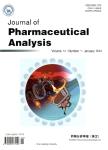Histological changes following surgically-assisted rapid tooth movement through resistance reduction and distraction osteogenesis in dogs
Histological changes following surgically-assisted rapid tooth movement through resistance reduction and distraction osteogenesis in dogs作者机构:Department of Stomatology First Affiliated Hospital Medical School of Xi'an Jiaotong University Xi'an 710061 China Department of Stomatology No. 2 Traditional Chinese Medical Hospital Shenzhen 518034 China Department of Orthodontics School of Stomatology Fourth Military Medical University Xi'an 710032 China Department of Orthodontics Stomatological Hospital of Xi'an Jiaotong University Xi'an 710004 China
出 版 物:《Journal of Pharmaceutical Analysis》 (药物分析学报(英文版))
年 卷 期:2010年第22卷第2期
页 面:139-142页
学科分类:0710[理学-生物学] 1003[医学-口腔医学] 100302[医学-口腔临床医学] 10[医学]
主 题:periodontal ligament distraction osteogenesis resistance reduction rapid tooth movement
摘 要:Objective To investigate the histological changes of rapid tooth movement in dogs treated by resistance reduction and distraction osteogenesis,aiming to establish an animal model and further to reveal the remodeling mechanism of rapid tooth movement. Methods A total of 8 local hybrid dogs were selected as subjects for this study. The second pre-molar was extracted on both sides. The experimental side underwent alvelor surgery for resistance reduction and a home-made tooth-borne intraoral distraction device was installed for rapid tooth movement,while for the other side (control side) only tooth-borne intraoral distraction device was used for rapid tooth movement. The longest active force-delivery span was 2 weeks,followed by 6-week retention. The distance between the moved tooth and anchor unit was recorded weekly,and radiography was performed for each side before and after distraction. The surrounding tissues including periodontal ligament and alveolar bone were sectioned for histological analysis. Results The average distance of tooth movement was 3.55mm on the experimental side and 1.11mm on the control side. The rate of tooth movement was notably higher (P0.01) and no significant apical root resorption was detected by X-ray on the experimental side. The active alvelor bone remodeling was found on the tension and pressure sides. However,there was no significant difference between the experimental side and the control side after the retention period. Conclusion The rate of orthodontic tooth movement can be accelerated through resistance reduction and periodontal distraction without any unfavorable effects but at minimal anchorage loss.



